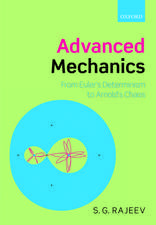Complexity and Evolution of Dissipative Systems: An Analytical Approach: De Gruyter Series in Mathematics and Life Sciences, cartea 4
Autor Sergey Vakulenkoen Limba Engleză Hardback – 31 dec 2013
This book focuses on the dynamic complexity of neural, genetic networks, and reaction diffusion systems. The author shows that all robust attractors can be realized in dynamics of such systems. In particular, a positive solution of the Ruelle-Takens hypothesis for on chaos existence for large class of reaction-diffusion systems is given. The book considers viability problems for such systems - viability under extreme random perturbations - and discusses an interesting hypothesis of M. Gromov and A. Carbone on biological evolution. There appears a connection with the Kolmogorov complexity theory. As applications, transcription-factors-microRNA networks are considered, patterning in biology, a new approach to estimate the computational power of neural and genetic networks, social and economical networks, and a connection with the hard combinatorial problems.
Preț: 788.64 lei
Preț vechi: 866.64 lei
-9% Nou
150.95€ • 164.02$ • 126.88£
Carte tipărită la comandă
Livrare economică 17-23 aprilie
Specificații
ISBN-10: 3110266482
Pagini: 311
Ilustrații: 21 schw.-w. Abb.
Dimensiuni: 170 x 240 x 22 mm
Greutate: 0.66 kg
Editura: De Gruyter
Colecția De Gruyter
Seria De Gruyter Series in Mathematics and Life Sciences
Locul publicării:Berlin/Boston
Notă biografică
Cuprins
Complexity and evolution of spatially extended systems: analytical approach
Chapter 1: Introduction
- Dynamical systems
- Attractors
- Strange attractors
- Neural and genetic networks
- Reaction diffusion systems
- Systems with random perturbations and Gromov-Carbone problem
Chapter 2: Method to control dynamics: Invariant manifolds, realization of vector fields
- Invariant manifolds
- Method of realization of vector fields
- Control of attractor and inertial dynamics for neural networks
Chapter 3: Complexity of patterns and attractors in genetic networks Centralized networks and attractor complexity in such network
- A connection with computational problems, Turing machines and finite automatons
- Graph theory, graph growth and computational power of neural and genetical networks
- Mathematical model that shows how positional information can be transformed into body plan of multicellular organism
- Applications to TF- microRNA networks. Bifurcation complexity in networks
Chapter 4: Viability problem, Robustness under noise and evolution
- Here we consider neural and genetic networks under large random perturbations
- Viability problem
- We show that network should evolve to be viable, and network complexity should increase
- A connection with graph growth theory (Erdos-Renyi, Albert-Barabasi)
- Relation between robustness, attractor complexity and functioning speed
- Why Stalin and Putin's empires fall (as a simple illustration)
- The Kolmogorov complexity of multicellular organisms and genetic codes: nontrivial connections
- Robustness of multicellular organisms (Drosophila as an example)
- A connection with the Hopfield system
Chapter 5: Complexity of attractors for reaction diffusion systems and systems with convection
- Existence of chemical waves with complex fronts
- Existence of complicated attractors for reaction diffusion systems
- Applications to Ginzburg Landau systems and natural computing
- Existence of complicated attractors for Navier Stokes equations




















